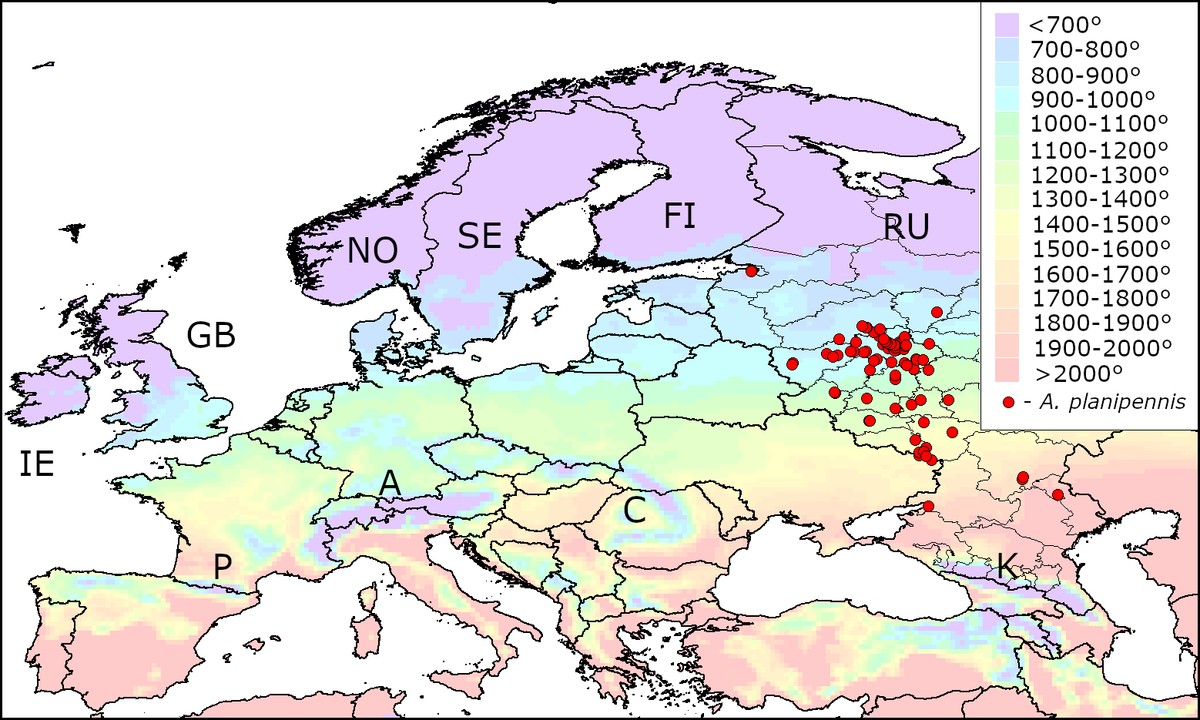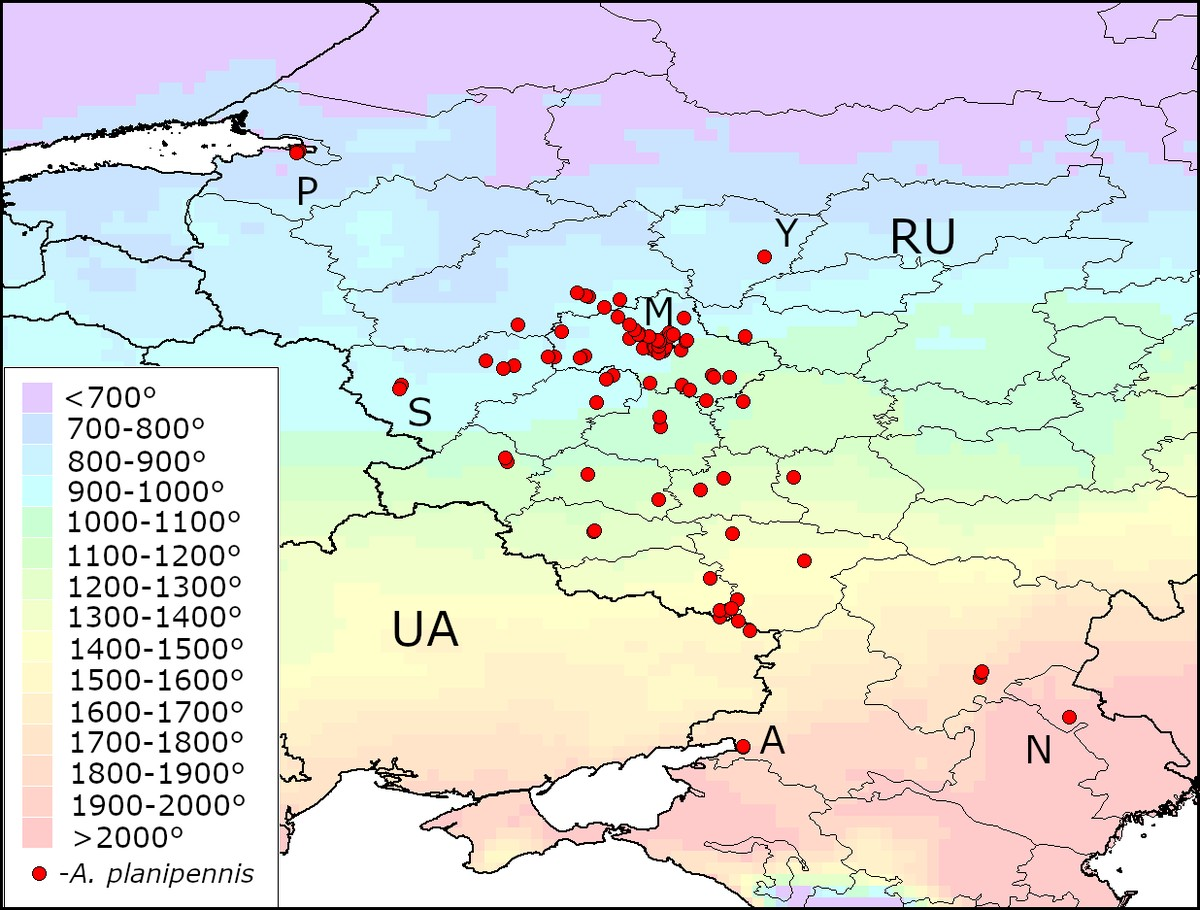
Emerald ash borer is a devastating pest of ash trees. About 20 years ago, it spread from its homeland - from East Asia - to North America and European Russia and began to settle, destroying millions of ash trees in forests and urban plantations. To date, the ash borer has occupied 19 regions of the European part of Russia and two regions of Ukraine. At the same time, the borer has come close to the borders of the European Union and is included in the list of the 20 most dangerous quarantine pests for the EU.
Marina Orlova-Benkovskaya and Andrey Benkovsky, Doctors of Biological Sciences, Senior Researchers at the IEE RAS, made the first prognosis of the potential distribution of the borer in Europe, based on the calculation of heat supply (the sum of effective temperatures). Calculations have shown that in most regions of Europe the heat is quite sufficient for the development of the borer. However, fortunately, in the north - in most regions of the Scandinavian Peninsula, as well as in the northern half of the British Isles - the borer, most likely, will not be able to settle.

In the European part of Russia, the ash borer settled as far as St. Petersburg and Yaroslavl. According to the calculations of scientists, the heat conditions will not allow it to travel further north. Ash trees growing in Karelia, the Vologda Oblast and other northern regions will not be affected by the pest.
Establishment of potential boundaries of alien pest settlement is a necessary condition for organizing quarantine and protective measures. In order to deal with a settling pest, you need to know in which regions the climatic conditions will allow it to survive and spread.

Insects magazine published an article by Marina Orlova-Benkovskaya and Andrey Benkovsky Low Heat Availability Could Limit the Potential Spread of the Emerald Ash Borer to Northern Europe (Prognosis Based on Growing Degree Days per Year). The article was made within the framework of the Russian Science Foundation grant 22-24-00166.
